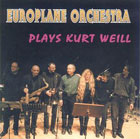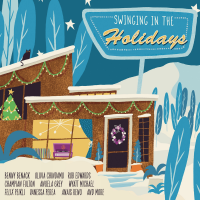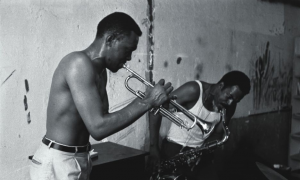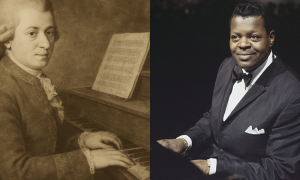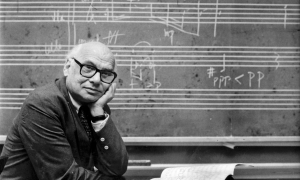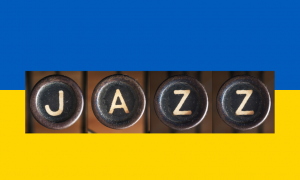Home » Jazz Articles » Opinion » Is There A New Mainstream?
Is There A New Mainstream?
In new mainstream, the old 32-bar standard song form is out the window, replaced by segments or sections that might require the improviser to negotiate shifting time signatures and/or shifting tempi...
 Back in the day, the term "mainstream" was intended to apply to jazz that fell between the radicalism of bebop and the galumphing stodginess of "moldy fig" music. In other words, the mainstream was the swinging sound of the majority of musicians circa 1950, the swing music played by the likes of Ben Webster or Roy Eldridge. As bebop went from radical music to generally accepted music, and then was challenged by the avant-garde and free jazz, mainstream became mainstream-modern, and Sonny Stitt became as mainstream as Coleman Hawkins.
Back in the day, the term "mainstream" was intended to apply to jazz that fell between the radicalism of bebop and the galumphing stodginess of "moldy fig" music. In other words, the mainstream was the swinging sound of the majority of musicians circa 1950, the swing music played by the likes of Ben Webster or Roy Eldridge. As bebop went from radical music to generally accepted music, and then was challenged by the avant-garde and free jazz, mainstream became mainstream-modern, and Sonny Stitt became as mainstream as Coleman Hawkins.But with the rise of fusion at the end of the 1960's, jazz began a long, slow process of splintering into many styles, many idioms, so much so that by the end of the Twentieth Century, jazz had become irrevocably Balkanized. There was no longer a discernable mainstream, certainly not in the sense of the term fifty years ago. However, as the current century unspools, the discerning listener may hear the emergence of a school of younger musicians who don't look to the past for inspiration. These players love to swing, but their music looks forward, employing unorthodox compositional forms, "odd" time signatures, and knotty, complex harmonies. So the question arises: is there now a New Mainstream in jazz? In my opinion, the answer is a definite yes.
If this is indeed the case, then I'd have to define "new mainstream". Okay, new mainstream is a jazz style that preserves the essential element of swing and uses composition to create new challenges for the improvisers. New mainstram's most obvious characteristic is probably the so-called "odd" time signature, such as 5/4 or 7/4. But today's jazz musicians have to swing in these time signatures, as hard and as fluently as they do in 4/4.
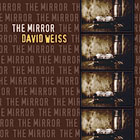 And they do. A composition that I consider representative of new mainstream is "Stalker," by trumpeter David Weiss, from his fine album The Mirror. In "Stalker," the soloist has to negotiate both a vamp in 7/4 and an up-tempo 4/4 blues, and everybody's got to swing both parts. And they do.
And they do. A composition that I consider representative of new mainstream is "Stalker," by trumpeter David Weiss, from his fine album The Mirror. In "Stalker," the soloist has to negotiate both a vamp in 7/4 and an up-tempo 4/4 blues, and everybody's got to swing both parts. And they do.
So new mainstream swings, but not from ideology. Today's musicians will incorporate the dreaded backbeat sometimes, and a guitarist like Pete McCann might crank it up sometimes. Actually, compositions in new mainstream might incorporate a rock feel as one of several segments.
 In new mainstream, the old 32-bar standard song form is out the window, replaced by segments or sections that might require the improviser to negotiate shifting time signatures and/or shifting tempi, such as Dave Douglas' "Seventeen," from Strange Liberation, a superb album that actually represents the essence of new mainstream, a swinging modern jazz that is driven by composition.
In new mainstream, the old 32-bar standard song form is out the window, replaced by segments or sections that might require the improviser to negotiate shifting time signatures and/or shifting tempi, such as Dave Douglas' "Seventeen," from Strange Liberation, a superb album that actually represents the essence of new mainstream, a swinging modern jazz that is driven by composition.
So who are the leaders of the new mainstream? This genre seems to have arisen spontaneously, through an unspoken consensus among younger musicians who quite obviously wanted to swing, but who also wanted to play a music rooted in the present. What better way to do that than to create new forms that incorporate modernity, that, among other things, recognize some of the innovations of Ornette Coleman? Dave Douglas is certainly one of the founders of the new mainstream. Chris Potter, an emerging giant of the saxophone, is part of it. So, too, are trumpeters David Weiss and Peter Kenagy, and pianist Renee Rosnes.
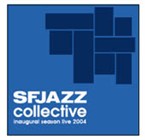 But to me, the best example of the new mainstream is the wonderful SF Jazz Collective, whose 3-CD set Inaugural Season Live 2004 is a towering achievement. (This set and the commercially-issued single CD on Nonesuch that is drawn from it have both been reviewed here at AAJ.) The SF Jazz Collective does it all. They tear through Ornette Coleman's music, and their own compositions use the shifting rhythms and time signatures that so characterize the new mainstream. The sterling soloists include trumpeter Nicholas Payton, pianist Renee Rosnes, and above all, saxophonist Joshua Redman, who is simply magnificent, certainly now a giant of the tenor saxophone. So there it is. I firmly believe that a new mainstream in jazz is here. Let's enjoy it.
But to me, the best example of the new mainstream is the wonderful SF Jazz Collective, whose 3-CD set Inaugural Season Live 2004 is a towering achievement. (This set and the commercially-issued single CD on Nonesuch that is drawn from it have both been reviewed here at AAJ.) The SF Jazz Collective does it all. They tear through Ornette Coleman's music, and their own compositions use the shifting rhythms and time signatures that so characterize the new mainstream. The sterling soloists include trumpeter Nicholas Payton, pianist Renee Rosnes, and above all, saxophonist Joshua Redman, who is simply magnificent, certainly now a giant of the tenor saxophone. So there it is. I firmly believe that a new mainstream in jazz is here. Let's enjoy it.
Discuss Is There A New Mainstream? on the AAJ Bulletin Board.
Tags
PREVIOUS / NEXT
Support All About Jazz
 All About Jazz has been a pillar of jazz since 1995, championing it as an art form and, more importantly, supporting the musicians who make it. Our enduring commitment has made "AAJ" one of the most culturally important websites of its kind, read by hundreds of thousands of fans, musicians and industry figures every month.
All About Jazz has been a pillar of jazz since 1995, championing it as an art form and, more importantly, supporting the musicians who make it. Our enduring commitment has made "AAJ" one of the most culturally important websites of its kind, read by hundreds of thousands of fans, musicians and industry figures every month.


